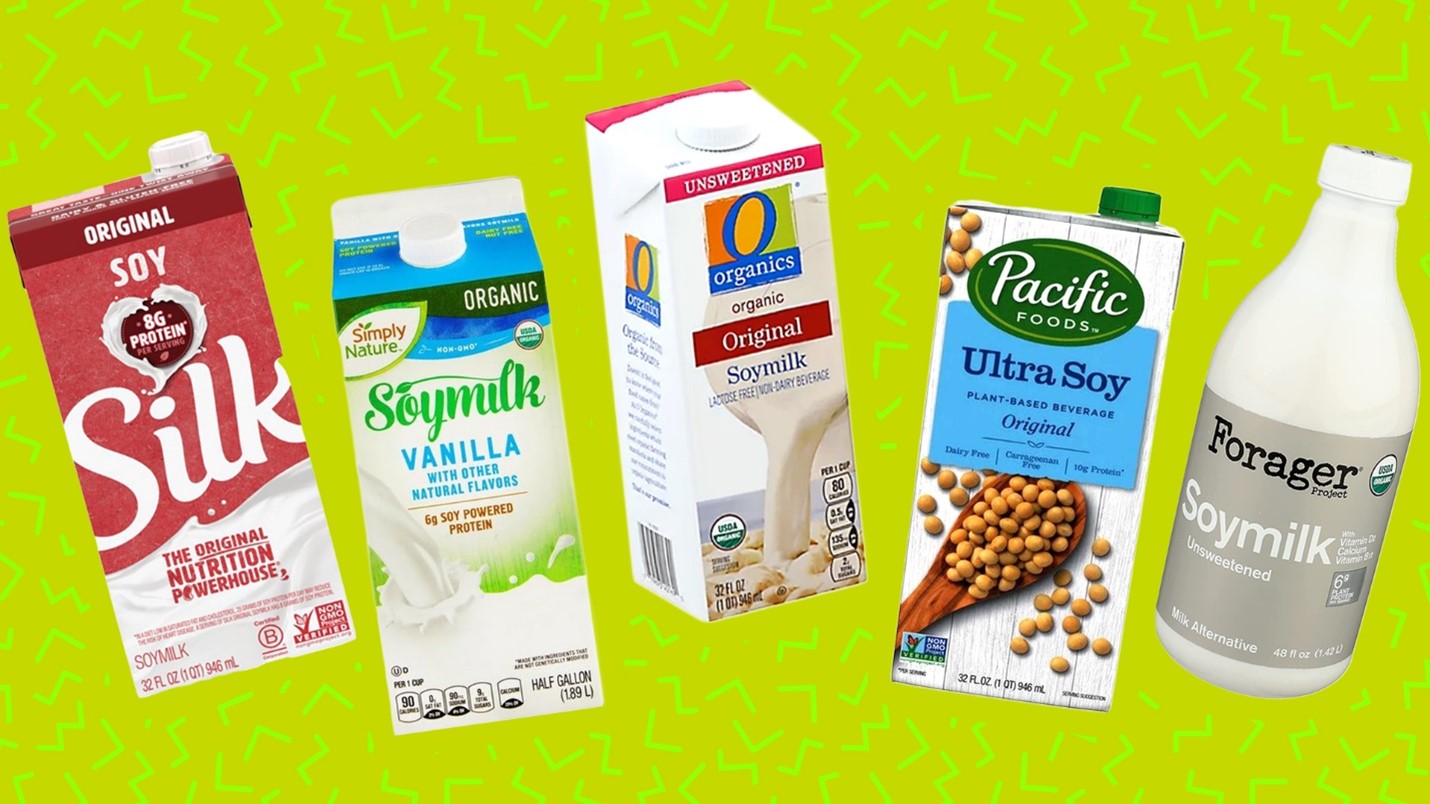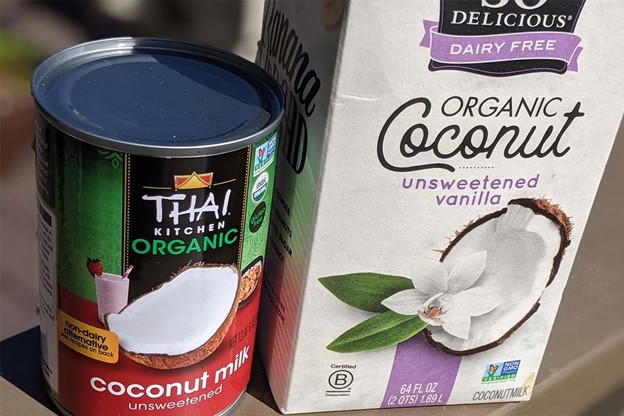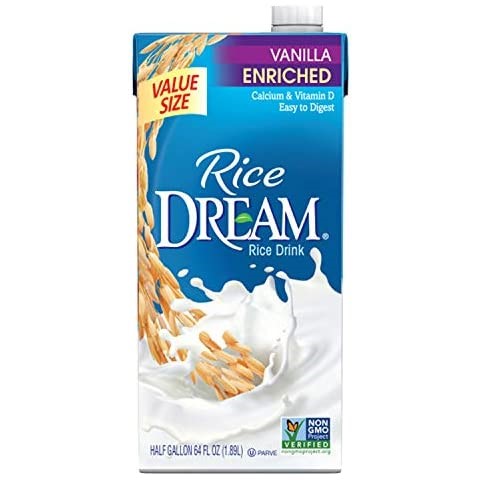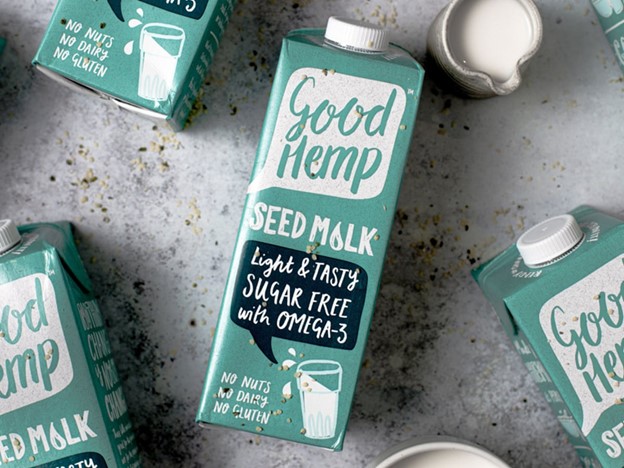Milk Alternatives: Here’s How to Use Them Correctly
If choosing to drink, cook, and bake with non-dairy milk (aka plant-based milk), it’s now easier than ever. Today’s grocery shelves are overflowing with soy milk, rice milk, almond milk, cashew milk, hemp milk, coconut milk, oat milk and more.

If you’re just wanting to drink an alternative, then you just choose the one you think tastes best. But what about cooking and baking – how do you know which type of non-dairy milk works best in which recipes? It does matter, because not all non-dairy milks work the same in every recipe.
Thank goodness www.onegreenplanet.org did the milk alternative world a favor and created a guide to help you choose the right non-dairy milk for all your cooking and baking needs. Here it is in a nutshell:
SOY MILK. Of all non-dairy milks available, soy milk, as compared to cow’s milk, has the most protein. With a nutty and slightly sweet taste, it’s good for drinking straight, poured over cereal or in coffee. For cooking, it’s one of the best non-dairy choices and can be used in place of cow’s milk in any recipe. Stable at high temperatures, it’s great for sauces and savory dishes. In baking, it works well because of its high protein content. Soy milk curdles well with vinegar, making a perfect butter”milk.”

ALMOND MILK. The most popular non-dairy milk, it’s high in vitamins and other nutrients but it does not contain much protein. It’s slightly sweet, nutty and creamy and is also delicious straight, in coffee or over cereal. It’s great in sweet and savory recipes, though you might find it a bit sweet for savory dishes and prefer to reserve almond milk for desserts and smoothies.
CASHEW MILK. Similar to almond milk (not containing much protein), it’s very creamy and is another good choice for drinking, adding to coffee or pouring over cereal. It does well in cooking and baking (in both sweet and savory dishes).

COCONUT MILK. Don’t confuse this with the coconut milk that comes in a can. Prepared from coconut meat, canned coconut milk isn’t one you want to drink straight from the glass as it’s way too thick and creamy. It’s wonderful in soups, stews and sauces and is thick enough to use for puddings and to whip into whipped “cream.”

The rich and creamy boxed dairy alternative has a good amount of fat but not a lot of protein. This is another alternative that’s ideal for drinking straight, adding to coffee or smoothies or pouring over cereal. It works well in cooking and baking. The coconut flavor is there but when added to recipes, it isn’t so strong you can’t use it in savory dishes.
RICE MILK. It’s thinner than other non-dairy choices and is made by blending boiled rice with water and adding some type of sweetener. Its flavor is light and sweet and is good added to coffee or poured over cereal. Some say it has the closest taste to cow’s milk. Its sweet taste makes it a good choice for desserts and its delicate texture makes it work well in soups and light sauces but is too sweet for savory recipes. While it can be used for baking, because it’s so light, a recipe may require some other type of thickening agent (flour, xanthan gum or cornstarch).

OAT MILK. It’s light with a mild, slightly sweet flavor and is comparable to low-fat or fat-free cow’s milk. It’s good straight, over cereal or in smoothies. It works well in both sweet and savory dishes. Its light texture makes it good for cream soups, curries.
HEMP MILK. Besides soy, hemp milk has more protein than other non-dairy milks. It’s thick and creamy. While its protein content makes it a good alternative to soy for baking, its strong taste makes it better for savory dishes.

FLAX MILK. Flax milk is simply cold-pressed flax oil mixed with filtered water. And is thin and smooth. It works over cereal, in coffee, or enjoyed straight. It works in recipes both sweet and savory, but be sure to buy the unsweetened type for savory recipes.
blog comments powered by Disqus

If you’re just wanting to drink an alternative, then you just choose the one you think tastes best. But what about cooking and baking – how do you know which type of non-dairy milk works best in which recipes? It does matter, because not all non-dairy milks work the same in every recipe.
Thank goodness www.onegreenplanet.org did the milk alternative world a favor and created a guide to help you choose the right non-dairy milk for all your cooking and baking needs. Here it is in a nutshell:
SOY MILK. Of all non-dairy milks available, soy milk, as compared to cow’s milk, has the most protein. With a nutty and slightly sweet taste, it’s good for drinking straight, poured over cereal or in coffee. For cooking, it’s one of the best non-dairy choices and can be used in place of cow’s milk in any recipe. Stable at high temperatures, it’s great for sauces and savory dishes. In baking, it works well because of its high protein content. Soy milk curdles well with vinegar, making a perfect butter”milk.”

ALMOND MILK. The most popular non-dairy milk, it’s high in vitamins and other nutrients but it does not contain much protein. It’s slightly sweet, nutty and creamy and is also delicious straight, in coffee or over cereal. It’s great in sweet and savory recipes, though you might find it a bit sweet for savory dishes and prefer to reserve almond milk for desserts and smoothies.
CASHEW MILK. Similar to almond milk (not containing much protein), it’s very creamy and is another good choice for drinking, adding to coffee or pouring over cereal. It does well in cooking and baking (in both sweet and savory dishes).

COCONUT MILK. Don’t confuse this with the coconut milk that comes in a can. Prepared from coconut meat, canned coconut milk isn’t one you want to drink straight from the glass as it’s way too thick and creamy. It’s wonderful in soups, stews and sauces and is thick enough to use for puddings and to whip into whipped “cream.”

The rich and creamy boxed dairy alternative has a good amount of fat but not a lot of protein. This is another alternative that’s ideal for drinking straight, adding to coffee or smoothies or pouring over cereal. It works well in cooking and baking. The coconut flavor is there but when added to recipes, it isn’t so strong you can’t use it in savory dishes.
RICE MILK. It’s thinner than other non-dairy choices and is made by blending boiled rice with water and adding some type of sweetener. Its flavor is light and sweet and is good added to coffee or poured over cereal. Some say it has the closest taste to cow’s milk. Its sweet taste makes it a good choice for desserts and its delicate texture makes it work well in soups and light sauces but is too sweet for savory recipes. While it can be used for baking, because it’s so light, a recipe may require some other type of thickening agent (flour, xanthan gum or cornstarch).

OAT MILK. It’s light with a mild, slightly sweet flavor and is comparable to low-fat or fat-free cow’s milk. It’s good straight, over cereal or in smoothies. It works well in both sweet and savory dishes. Its light texture makes it good for cream soups, curries.
HEMP MILK. Besides soy, hemp milk has more protein than other non-dairy milks. It’s thick and creamy. While its protein content makes it a good alternative to soy for baking, its strong taste makes it better for savory dishes.

FLAX MILK. Flax milk is simply cold-pressed flax oil mixed with filtered water. And is thin and smooth. It works over cereal, in coffee, or enjoyed straight. It works in recipes both sweet and savory, but be sure to buy the unsweetened type for savory recipes.
 Alice Osborne
Alice Osborne
Weekly Newsletter Contributor since 2006
Email the author! alice@dvo.com
Sources:
- www.nytimes.com
- www.sporked.com
- www.elmhurst1925.com
- www.vegan.com
- www.findthisbest.com
- www.theguardian.com
